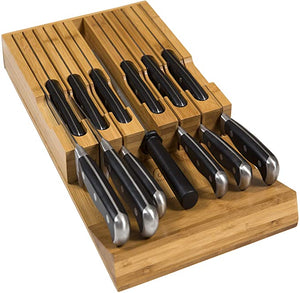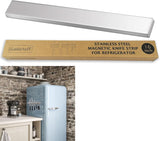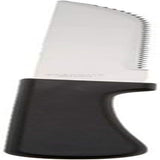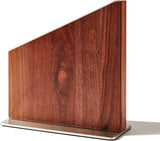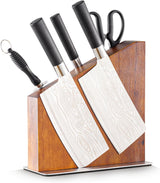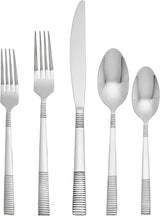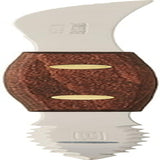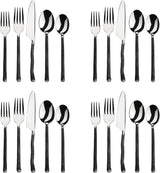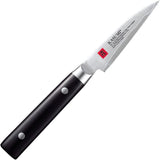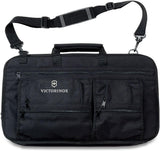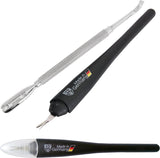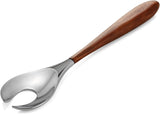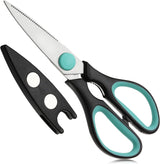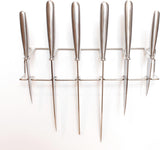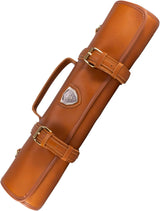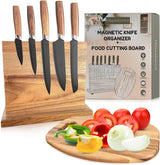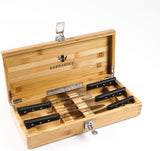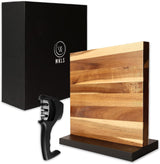In the culinary world, precision and efficiency are paramount, and a significant part of that precision comes from the utensils you use. Among the myriad of kitchen tools, the Santoku knife stands out as a versatile and indispensable ally to both amateur cooks and professional chefs alike. If you've ever wondered how to cut with a Santoku knife, you are in the right place! In this article, we're delighted to cover everything you need to know to master this fantastic knife. With its here-grip technology and its broad, flat blade, the Santoku knife is designed to handle a range of cutting tasks with tremendous efficiency. Let's dive into the mechanics, the best practices, and the secrets to making the most out of your Santoku knife.
Santoku translates to 'three virtues' or 'three uses,' highlighting its triad capability: slicing, dicing, and mincing.

Understanding the Design and Technology of the Santoku Knife
The Santoku knife originated in Japan and is characterized by its sheepsfoot blade, which typically ranges between 5 to 8 inches long. This unique design sets it apart from Western-style knives and offers diverse functionalities. The knifes broad blade allows for an easy scooping motion, while the slight curve towards the tip enables a rocking motion often used in dicing and mincing.
The tremendous technology involved in manufacturing a Santoku knife not only ensures its durability but also enhances its cutting precision. Most Santoku knives are made from high-carbon stainless steel, which holds its edge longer and is resistant to rust and corrosion.
The Importance of Grip
Before diving into advanced knife techniques, mastering the grip is essential. The knife handle should feel comfortable in your hand, and you should be able to control it without straining. A firm but relaxed grip is crucial for both safety and efficiency.
Typically, you want to pinch the blade with your thumb and index finger just where the blade meets the handle. This gives you better control and leverage, allowing for more precise cuts.

Basic Cutting Techniques with Santoku Knife
Once you've mastered the grip, the next step is to familiarize yourself with basic cutting techniques. Here are the primary methods you'll use:
Slicing
One of the key advantages of the Santoku knife is its ability to slice through ingredients seamlessly. To do this:
- Position the ingredient on the cutting board.
- Secure it using the 'claw' grip, curling your fingers under to protect them.
- Make smooth, even strokes, moving the knife vertically up and down.
- Don't saw through the ingredient; let the blade do the work.
Dicing
Dicing involves cutting ingredients into uniformly small pieces:
- Start by slicing the ingredient into even strips.
- Rotate the strips 90 degrees and cut them into cubes.
- The key here is consistent, even cuts to ensure uniform cooking.
Mincing
Mincing is ideal for herbs and garlic:
- Gather the item into a small pile on your cutting board.
- Place the knife tip on the board and lift and lower the blade through the item in a rapid, rocking motion.
- Keep the knife tip in contact with the board for better control.

Advanced Cutting Techniques and Tips
Ready to take your skills to the next level? Let's explore some advanced cutting techniques:
Julienne Cuts
Also known as matchstick cuts, julienne cuts are perfect for achieving even, thin strips:
- First, cut the ingredient into manageable sections.
- Slice each section into thin, uniform strips.
- This technique is often used for vegetables like carrots and bell peppers.
Chiffonade
This fancy-sounding technique is surprisingly straightforward and perfect for leafy greens and herbs:
- Stack the leaves on top of one another.
- Roll them tightly.
- Slice the roll into thin ribbons.
- Great for garnishing and adding flavor to dishes.
Diagonal Cuts
Diagonal cuts offer a stylish way to present your ingredients:
- Hold the ingredient at a slight angle.
- Slice through it, maintaining the diagonal orientation.
- Commonly used for stir-fry vegetables and meat slices.
Maintaining Your Santoku Knife
To keep your Santoku knife in top condition, regular maintenance is essential:
Sharpening
For the best results, sharpen your Santoku knife using a whetstone:
- Soak the whetstone in water (if required) for about 10 minutes.
- Hold the knife at a 15-20 degree angle to the stone.
- Move the blade back and forth across the stone in a sweeping motion.
- Repeat until you've achieved a sharp edge.
Storage
Proper storage prevents damage and injuries:
- Use a knife block, magnetic strip, or blade guards to store your knife.
- Ensure it's dry before storing to prevent rusting.
Cleaning
Hand wash your Santoku knife to maintain its integrity:
- Avoid dishwashers, as they can dull the blade and damage the handle.
- Use mild soap and a soft sponge for cleaning.
- Dry immediately with a clean towel.
Incorporating the Santoku Knife into Your Daily Routine
Having a Santoku knife in your culinary arsenal elevates your cooking game:
Whether you're slicing vegetables for a healthy stir-fry, dicing ingredients for a hearty soup, or mincing herbs for a flavorful garnish, the Santoku knife simplifies these tasks. Its versatility makes it an ideal choice for everyday use, and once you get accustomed to its feel and rhythm, you may find it replacing several other knives in your kitchen.
Recipes Ideal for Santoku Knife Use
Here are some recipes that are perfect for practicing your Santoku knife skills:
- White Chicken Chili - Perfect for dicing chicken and vegetables.
- Tomato Basil Soup - Excellent for slicing and dicing tomatoes and herbs.
- Roast Chicken - Utilizing the Santoku knife for mincing herbs and prepping vegetables.
FAQ: Your Questions Answered
What are the advantages of a Santoku knife?
A Santoku knife offers versatility, allowing you to slice, dice, and mince with ease. Its design reduces stickiness, and the wide blade is excellent for scooping ingredients.
Can a Santoku knife replace my chef's knife?
While a Santoku knife is highly versatile, it's not a complete replacement for a chef's knife. Each has unique attributes and excels in different areas. However, many find the Santoku to be more user-friendly for daily tasks.
How often should I sharpen my Santoku knife?
This depends on how frequently you use it, but generally, sharpening every 3-6 months keeps it in prime condition. Regular honing between sharpening sessions also helps maintain the edge.
For more detailed insights into basic knife skills, consider visiting NYT Cooking Knife Skills Guide.
In conclusion, mastering how to cut with a Santoku knife can significantly enhance your culinary skills. By understanding the design, practicing basic and advanced cutting techniques, and maintaining your knife properly, you'll find yourself more efficient and confident in the kitchen. So grab your Santoku knife, and start slicing, dicing, and mincing your way to culinary excellence!
As an Amazon Associate, I earn from qualifying purchases.
